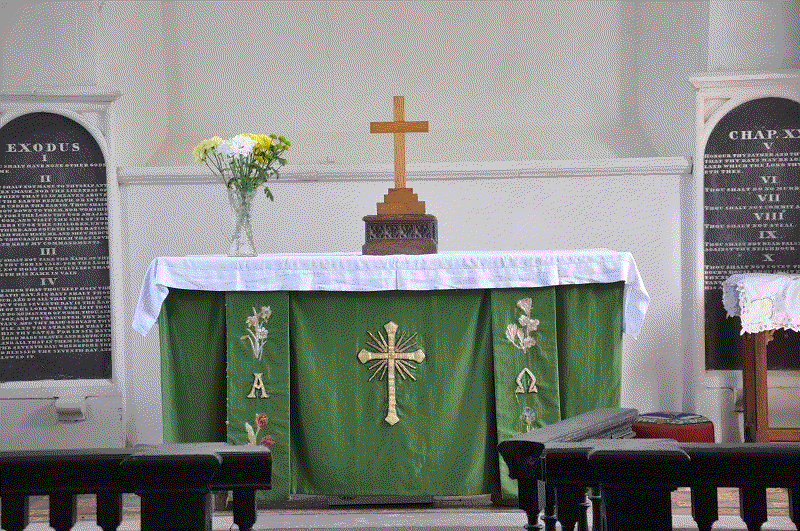Thurne sits on the edge of the island of Flegg - higher land at eastern part of the Broads basin. The church was built about 700 years ago in position safe from flooding.

Although St Edmund's has seen a great deal of change and restoration over the years, doors, windows and chancel fittings bear out the date given for the building as the early 14th century. Some things have been here since the Roman Catholic rite was practised - look for the rood beam over the chancel, which would have held images of the Crucifixion, the Virgin Mary and St John. It is a rare thing to find and is mentioned in a document in 1489. There were three bells in 1552 although only one remains today. The bell was cast by William of Norwich one of the earliest known bell founders in the 14th century.

The roof with its arch-braced construction and decorative carvings was built in the late 15th century. Other furnishings tell of a later, Protestant rite. A local carpenter, with a lathe, fashioned the communion rails with their 'dumb-bell' balusters; Archbishop William Laud decreed that these should be placed in churches in the 17th century.

There is a 'squint' in the west wall of the tower, the original purpose of which is unclear. It may have been used for ill or sick people outside to peer through to see the 'Elevation of the Host' at Mass: the most sacred part of the service. There is a local tradition that it was used as a 'look-out' to communicate with St Benet's Abbey in case of need.
The current entrance is through a rather plain door and doorway on the south side. In contrast, there is an impressive north porch which was the main entrance in the Middle Ages. Even now, there is a path to the northwest corner of the churchyard which connects to the foot path leading towards the village of Thurne.